Doncey Albin
CogExplore: Contextual Exploration with Language-Encoded Environment Representations
Jun 24, 2024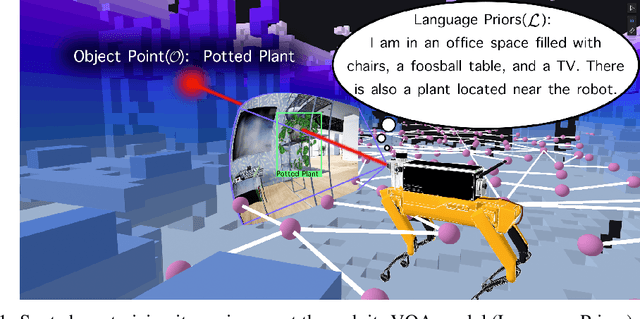

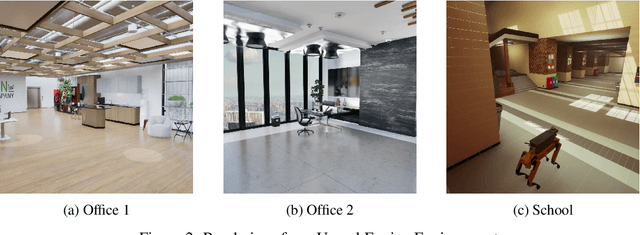

Abstract:Integrating language models into robotic exploration frameworks improves performance in unmapped environments by providing the ability to reason over semantic groundings, contextual cues, and temporal states. The proposed method employs large language models (GPT-3.5 and Claude Haiku) to reason over these cues and express that reasoning in terms of natural language, which can be used to inform future states. We are motivated by the context of search-and-rescue applications where efficient exploration is critical. We find that by leveraging natural language, semantics, and tracking temporal states, the proposed method greatly reduces exploration path distance and further exposes the need for environment-dependent heuristics. Moreover, the method is highly robust to a variety of environments and noisy vision detections, as shown with a 100% success rate in a series of comprehensive experiments across three different environments conducted in a custom simulation pipeline operating in Unreal Engine.
SceneSense: Diffusion Models for 3D Occupancy Synthesis from Partial Observation
Mar 18, 2024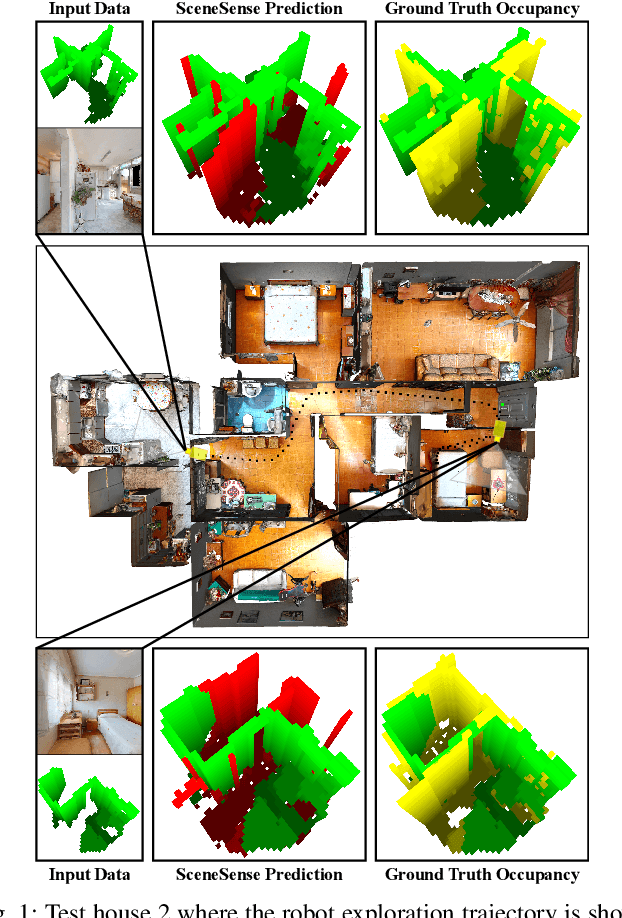
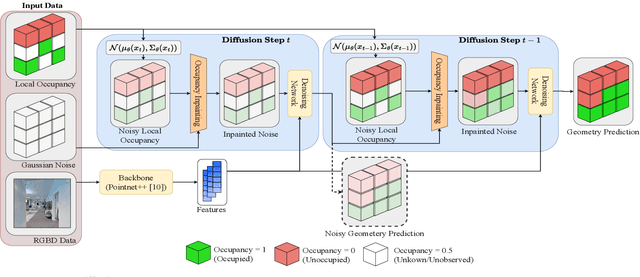
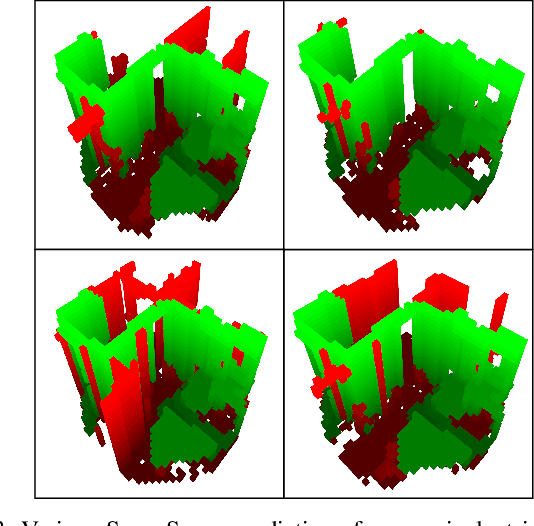
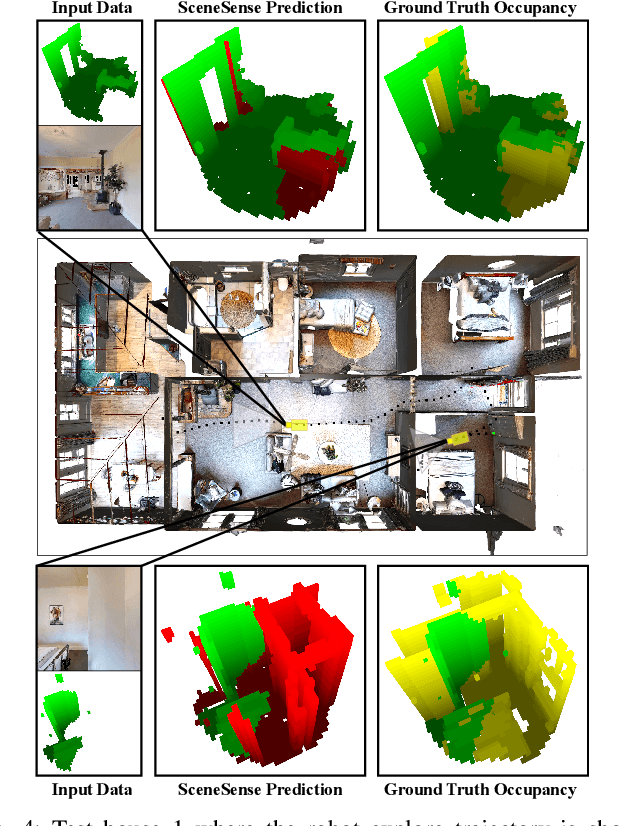
Abstract:When exploring new areas, robotic systems generally exclusively plan and execute controls over geometry that has been directly measured. When entering space that was previously obstructed from view such as turning corners in hallways or entering new rooms, robots often pause to plan over the newly observed space. To address this we present SceneScene, a real-time 3D diffusion model for synthesizing 3D occupancy information from partial observations that effectively predicts these occluded or out of view geometries for use in future planning and control frameworks. SceneSense uses a running occupancy map and a single RGB-D camera to generate predicted geometry around the platform at runtime, even when the geometry is occluded or out of view. Our architecture ensures that SceneSense never overwrites observed free or occupied space. By preserving the integrity of the observed map, SceneSense mitigates the risk of corrupting the observed space with generative predictions. While SceneSense is shown to operate well using a single RGB-D camera, the framework is flexible enough to extend to additional modalities. SceneSense operates as part of any system that generates a running occupancy map `out of the box', removing conditioning from the framework. Alternatively, for maximum performance in new modalities, the perception backbone can be replaced and the model retrained for inference in new applications. Unlike existing models that necessitate multiple views and offline scene synthesis, or are focused on filling gaps in observed data, our findings demonstrate that SceneSense is an effective approach to estimating unobserved local occupancy information at runtime. Local occupancy predictions from SceneSense are shown to better represent the ground truth occupancy distribution during the test exploration trajectories than the running occupancy map.
 Add to Chrome
Add to Chrome Add to Firefox
Add to Firefox Add to Edge
Add to Edge